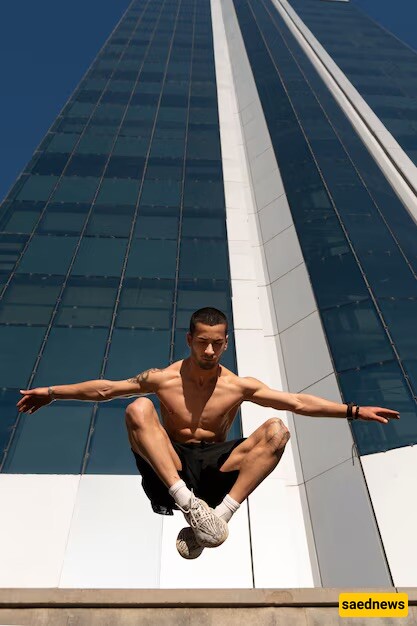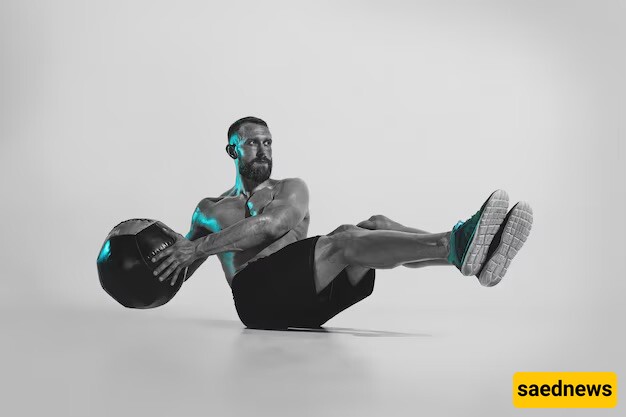Plyometric exercise is designed to increase an individual's ability to combine speed and power. Through plyometric training, athletes will have a faster start and quicker direction changes. It became popular in Eastern Europe in the early 1970s and was referred to as power training.

Plyometric exercise
The term plyometric is derived from two Latin words: "plyo" meaning more and "metric" meaning measure. Plyometric means an increase in size or measure. Plyometric exercises enhance muscle performance by generating maximum strength in the shortest time possible. This ability to generate power is known as "strength." The elasticity of muscles is a key factor in understanding the “stretch-shortening” cycle, which can produce more power than a simple muscular contraction. A simple example is the knee-jerk reflex triggered by tapping the knee with a plastic hammer. In sports literature, the transition from eccentric to concentric muscle contraction is referred to as the amortization phase, which occurs in milliseconds. For example, a top jumper’s feet stay on the ground for up to 0.12 seconds.

Stages of a plyometric movement
All plyometric movements consist of three stages:
Stage 1: Involves an eccentric muscle contraction and pre-stretching. In this phase, elastic energy is produced and stored.
Stage 2: This is the transition phase from pre-stretch to the start of concentric muscle contraction. This short time interval is called the "amortization" phase. The shorter this phase, the more powerful the subsequent muscle contraction will be.
Stage 3: This is the actual muscle contraction, which athletes focus on, resulting in a powerful jump or throw.
These three stages are collectively known as the Stretch-Shortening Cycle (SSC), and plyometric exercises can be referred to as SSC exercises.
What do we need to start plyometric training?
Flexibility: Before starting plyometric exercises, the individual should have a high degree of flexibility.

Aerobic exercises: Aerobic training is a crucial factor in fitness programs and plays a key role in helping athletes return to their baseline condition.
Principles of plyometric training
Jumping in place: A jump that lands at the same spot from which it started.
Standing jump: Focuses on a maximum effort in either horizontal or vertical jumping.
Combined jumps and hopping: An advanced skill that combines in-place jumps and standing jumps. These exercises should be done within a distance of less than 30 meters.
Bounding exercises: These movements are used to develop stride sequence and length. They are intensified versions of natural running with long strides.
Box exercises: A combination of hopping and jumping along with depth jumps.
Plyometric training program design
Intensity: Controlled by the type of exercises performed. To ensure proper execution and intensity, the work-to-rest ratio should be 1:5 to 1:10. Additionally, if the athlete’s primary sport involves plyometric exercises, they can be performed during competition season as well.
Volume: Evaluated by counting the number of foot contacts with the ground. For beginners, 60 to 100 foot contacts per session are recommended during off-season. For intermediate individuals, 100 to 150, and for advanced athletes, 120 to 200 jumps are suggested.
Resistance training: Resistance exercises are ideal for preparing muscles for rapid load changes in plyometric training.
Training capacity: A European sports science specialist suggests that an athlete should be able to squat 2.5 times their body weight! Another theory proposes placing a weight equal to 60% of the athlete’s body weight on a squat bar and asking the athlete to complete five repetitions within 5 seconds. If they cannot do this, more focus on resistance training is needed.
Anaerobic and speed training: This type of training, combined with appropriate recovery periods, is very effective in increasing endurance in repeated plyometric exercises.
Training frequency: 48 to 72 hours of recovery is beneficial, though intensity should be considered.
Circuit training: Plyometric exercises can be incorporated into circuit training.
Time allocation: Initial plyometric training should not exceed 20 to 30 minutes. Additionally, warm-up time should be considered. The maximum recommended duration for plyometric training is between 40 to 45 minutes.
Training duration: For beginners, the focus should be on skill development, not intensity. A 12 to 18-week foundational plyometric program is sufficient to ensure the athlete's readiness.
Combination training: Some older European sports specialists believe that plyometric exercises can be combined with weight training, but only for athletes with experience in both weight training and basic jumping exercises.
Plyometric equipment
Plyometric exercises can be performed both indoors and outdoors, provided there is sufficient space and a smooth surface. Suitable surfaces include plastic mats and grass fields. Simple training equipment includes cones, boxes, hurdles, balance boards, stairs, and medicine balls. The height of boxes should be between 25 to 60 cm, with higher boxes allowed for elite athletes.
Who is plyometric training suitable for?
Since plyometric exercises require coordination, balance, and high stability of the body and muscles, they are suitable for individuals with a strong body and significant sports experience. In fact, this training method is ideal for professional athletes aiming to increase their explosive power and performance in competitions. But what if you’re not a professional athlete? Should you completely avoid this training method? No, you can first focus on exercises that improve your balance and stability, which will allow you to perform plyometric exercises effectively. For example, yoga and barre exercises can be good options to improve body coordination and balance. Over time, as your body strengthens, you can gradually incorporate plyometric exercises into your routine and improve your fitness and physical performance.
4 key benefits of plyometric training
It is said that football players, Olympic track athletes, and baseball players use plyometric training to enhance their performance and achieve better results. But what exactly are the benefits of these exercises? How do they contribute to the health and fitness of athletes? Here are four important benefits of plyometric exercises:
Increases agility
Plyometric exercises activate the large, primary muscles of the legs in a specific order. This sequence leads to explosive power, strengthening the lower body muscles and increasing overall body agility. Agility is crucial in sports, as it refers to the ability of the body to perform quick movements and high levels of activity. Plyometric exercises are one of the best ways to improve agility.
A great option for combining different training methods
Have you ever hit a plateau and stopped seeing progress in your strength and endurance? Many athletes may face this issue, where no progress is observed after some time. This happens because the body adapts to repetitive exercises. Therefore, to continue progressing, you must introduce new challenges. Plyometric exercises are ideal for such situations, as they help you apply more pressure and create new challenges, thus increasing your strength and agility.
Improves cardiovascular fitness
Plyometric exercises are also a form of aerobic exercise. They engage the body's major muscle groups, making them an excellent way to improve cardiovascular health and overall fitness. By performing these exercises and adjusting their intensity, you can increase your heart rate and burn more oxygen. This strengthens the heart muscle and improves blood circulation.
Enhances proprioception
Proprioception refers to the sense of body movement and coordination between body parts. Often referred to as the “sixth sense,” it represents your mind’s understanding of the current position of your body in space and in relation to other objects. You can enhance this connection through plyometric training. By performing these exercises regularly, you will improve your body’s reaction speed, and you will learn to move through space with more awareness of your body and surroundings.

